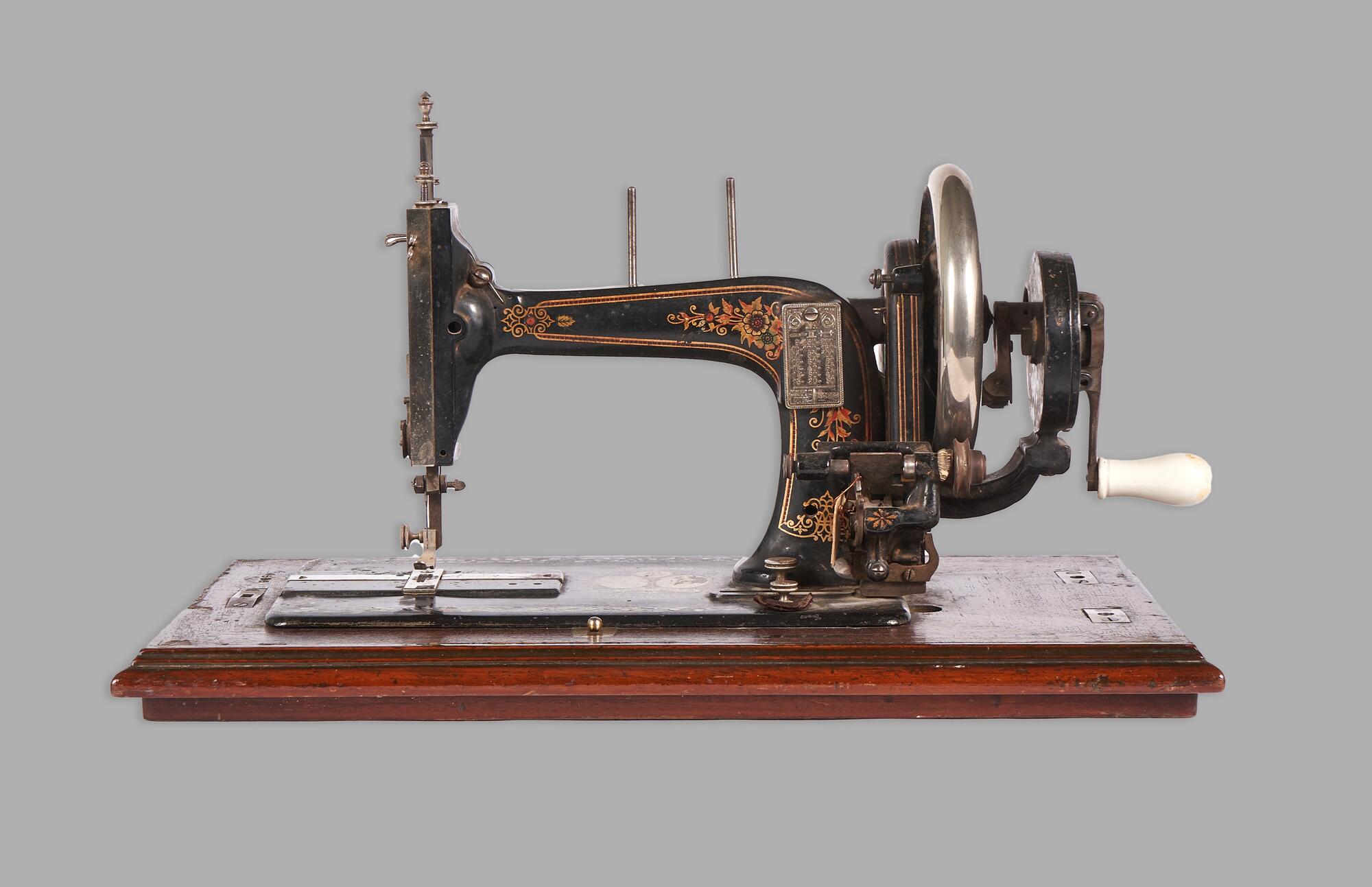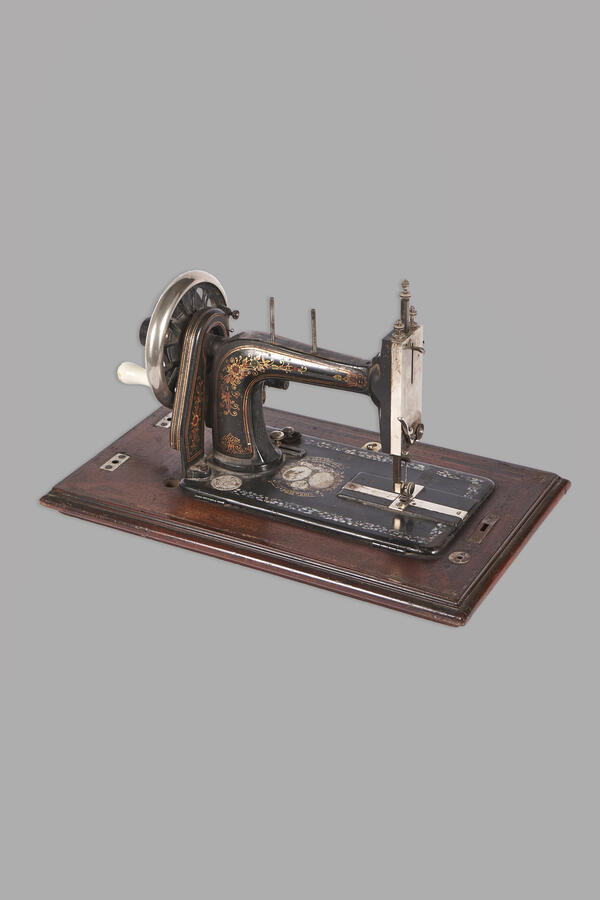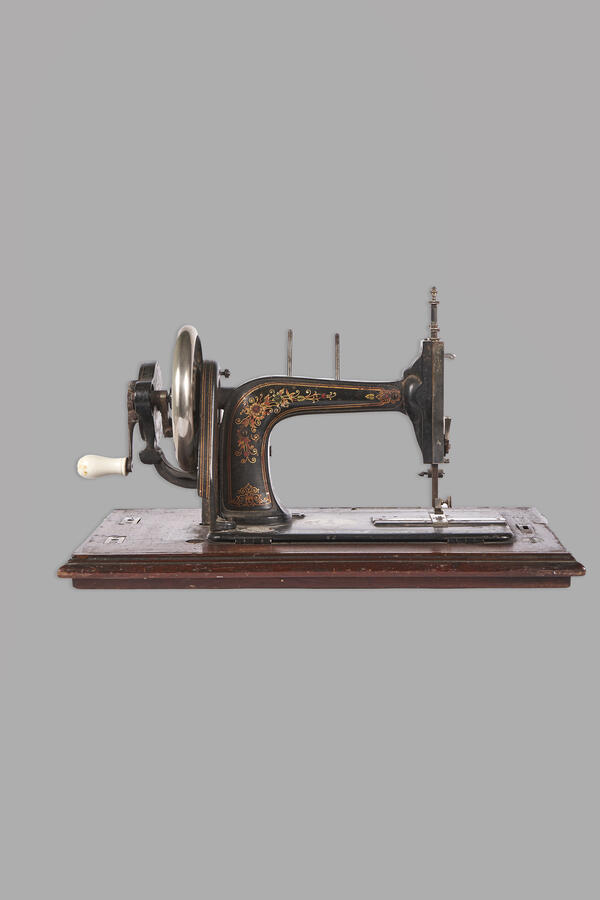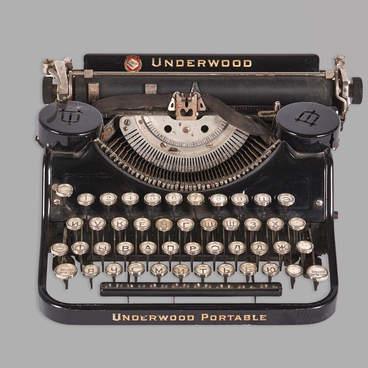The first sewing machines differed significantly from the ones we use nowadays. They began to look more like familiar models in the last quarter of the 19th century.
Based on their functionalities, sewing machines can be operated with or without a foot, and they can be mechanical and electric. Depending on their purpose, there are domestic and industrial sewing machines. Recently, computerized sewing machines have come into production.
The permanent exhibition of the Novorossiysk Historical Museum-Reserve presents the Jubilee sewing machine of 1895. It was specially commissioned by the Popov Trading House and Company, which celebrated its 25th anniversary since the company opened in Moscow. The sewing machine was assembled from the details made by the German company “Seidel and Naumann”. It is noteworthy that this model was one of the first lockstitch machines.
The Popov Trading House opened in 1870 and immediately took a leading position in the sewing machine market. The sewing machines sold by the company were dubbed “Popovki”, and the so-called “Jubilee Popovka” was produced for the 25th anniversary of the enterprise.
Let us use the machine that is on display in the museum as an example and study the construction of the device. Any sewing machine consists of basic components. In the late 19th — first half of the 20th century, sewing machines had a cast, usually painted body. The main parts included a balance wheel with a handle, an arm, a needle clamp, a throat plate, and a presser foot with a take-up lever. On top, there was a vertical spool pin to hold the spool of thread in place while rewinding threads and sewing. The body of the machine was placed on a flat reclining platform, under which the shuttle race body is located. At the top of the arm, there was an oblong thread tension regulator for the upper and lower threads.
The platform and body of the machine are covered with black lacquer and painted with a tricolor floral pattern with a predominance of golden color. On the vertical pillar, there is a plate with a table of correspondence between the numbers of needles and threads. The pillar has a mark with the serial number of the product (2339) and the model number (9). The platform is placed on a wooden lacquered stand — the base of the lost wooden case.
Based on their functionalities, sewing machines can be operated with or without a foot, and they can be mechanical and electric. Depending on their purpose, there are domestic and industrial sewing machines. Recently, computerized sewing machines have come into production.
The permanent exhibition of the Novorossiysk Historical Museum-Reserve presents the Jubilee sewing machine of 1895. It was specially commissioned by the Popov Trading House and Company, which celebrated its 25th anniversary since the company opened in Moscow. The sewing machine was assembled from the details made by the German company “Seidel and Naumann”. It is noteworthy that this model was one of the first lockstitch machines.
The Popov Trading House opened in 1870 and immediately took a leading position in the sewing machine market. The sewing machines sold by the company were dubbed “Popovki”, and the so-called “Jubilee Popovka” was produced for the 25th anniversary of the enterprise.
Let us use the machine that is on display in the museum as an example and study the construction of the device. Any sewing machine consists of basic components. In the late 19th — first half of the 20th century, sewing machines had a cast, usually painted body. The main parts included a balance wheel with a handle, an arm, a needle clamp, a throat plate, and a presser foot with a take-up lever. On top, there was a vertical spool pin to hold the spool of thread in place while rewinding threads and sewing. The body of the machine was placed on a flat reclining platform, under which the shuttle race body is located. At the top of the arm, there was an oblong thread tension regulator for the upper and lower threads.
The platform and body of the machine are covered with black lacquer and painted with a tricolor floral pattern with a predominance of golden color. On the vertical pillar, there is a plate with a table of correspondence between the numbers of needles and threads. The pillar has a mark with the serial number of the product (2339) and the model number (9). The platform is placed on a wooden lacquered stand — the base of the lost wooden case.





